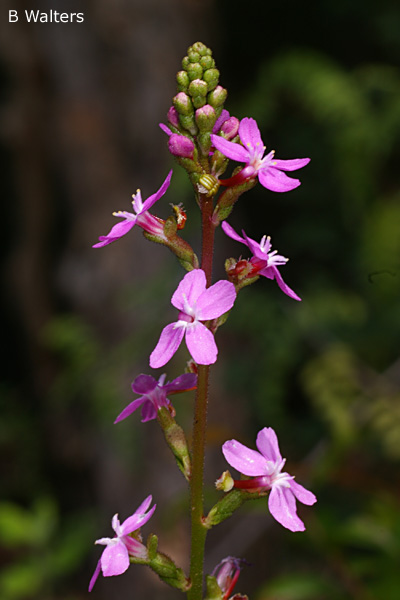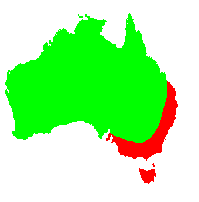General Description:
Stylidium is a genus of about 130 species, most of which occur in Australia with a few being found in Asia. They are known as “trigger plants” because of the unique, irritable flower column which is triggered by insect visitors. The trigger remains cocked until an insect probes the flower and then springs upwards and deposits pollen on the head or back of the insect which then transfers the pollen to another flower (see photo below).
Stylidium graminifolium is the most widespread species. It is a tufted, grass-like plant with leaves from 6-20 cm long and about 4 mm wide. The small, pink (occasionally white) flowers are about 10 mm in diameter and occur on stalks up to 40 cm high from the centre of the grassy clump. The flowers have 5 petals, although only 4 are conspicuous with the fifth being reflexed and located behind the “trigger’ which protrudes from the throat of the floral tube. The trigger consists of 2 stamens and the style fused together into a column.
Stylidiums, generally, are not widely cultivated and can be difficult to maintain in gardens. S.graminifolium is hardier than most other species and appreciates well drained soils in a sunny or lightly shaded situation. The plants also make excellent subjects for growing in containers.
Propagation form seed is relatively easy. Division of vigorous clumps may sometimes be possible.

Stylidium graminifolium
Photo: Brian Walters

The trigger of a Stylidium species depositing pollen onto
the head of a bee
Photo: Sheryl Tobin
 Australian Native Plants Society (Australia)
Australian Native Plants Society (Australia)